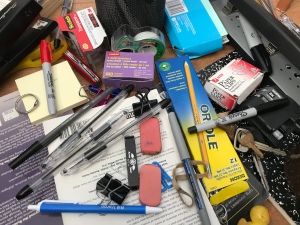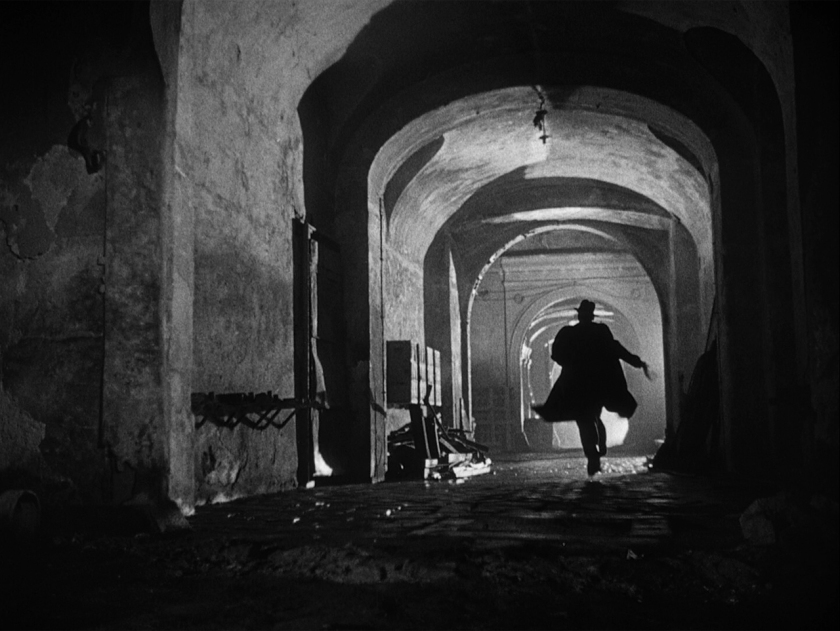What is it with films and lighting? It’s right there, number 1 in the most cliched of all Hollywood phrases*. And if you’ve ever been on a film set, you know that the vast majority of time is spent lighting and relighting the scene. But why?
Visual Medium
At its basic level, film (and the modern equivalent of digital video) is actually a way of recording and preserving light. So while we think of films as epic stories with huge budgets and special effects, it’s really a specific kind of recording device. On a technical level, you could compare film to taking a plaster impression of an animal print or recording tremors with a seismograph.

For those of you old enough to remember developing photos from 35mm film, this is “film” at its most basic. Photons bounce off an object, are focused by a lens onto the film, activate photo-reactive chemicals, and leave an impression. The film is then developed into a negative, and the negative is used to produce the positive picture.

The thing is, that 35 mm film from your disposable CVS camera is actually the same film used in movie cameras and was essentially unchanged for 100 years. Today, the process is digital, but essentially your iPhone and a professional movie camera work the same way. And it’s all about capturing light.
What are we waiting on?
So why does it take so long to light a film set? There’s a problem between seeing and seeing. Your brain plays probably about the same role in sight as your eyes. Yes, your eyes perceive light, but your brain needs to decide what to focus on (literally and figuratively). In addition to actual focal distance, it must determine proportion, patterns, colors, shapes, and movement. Are you looking at a cat or a lion? Or a toy lion? Or a picture of a lion?
Our brains concentrate on only one small part of what we actually see. But when a filmmaker sits you in a darkened room and projects an image 30 feet tall and 100 feet wide, they need to direct your attention. They have to be sure what they are showing you is more interesting than the exit sign in the corner of the theater or that weird haircut on the guy two rows in front of you.

Just to be clear, your director of photography and the camera are taking the place of the two most complex organs in the human body. This involves framing shots appropriately, dressing and costuming appropriately, and making sure the correct subject matter is in focus. And it also involves a LOT of lighting.
Consider this shot from Citizen Kane.

It’s both simple and incredibly effective. The main sources of light come from the back of the room, creating a hard silhouette of both subjects. They are both easy to see while also being obscured. The light beams add a sense of depth, while the desk lamp fills in some of the void. That way we aren’t merely looking at silhouettes.
This shot required critical placement of the lights, camera, and actors. The lights had to be focused and balanced in intensity so the desk wasn’t too dark or the beams too bright. Smoke or fog played a critical role in creating those beams, too.
Physics of Photography
Whether you’re taking photos at a wedding or shooting a film for Spielberg, everyone’s playing by the same rules. Light and film have certain properties and limitations. A lot of cinematography is understanding these limitations and finding a way to get the look you want with the tools you have.
Concentrate!
There can be a lot of stuff in a scene: actors, props, sets. How does your audience know where to look? Light, of course. Here’s a very messy photo from my office.

Now where did I leave that fine point black Sharpie? When I change the lighting, it’s a little easier to see. 
Exposure
Ever had an annoying camper shine a flashlight in your eyes in the middle of the night? First, it’s painfully bright. Then it takes your eyes a few seconds to readjust to the darkness. Your irises make minor adjustments constantly, and because it happens so fast, you don’t usually notice. What happens if you’re filming a scene that includes very bright and very dark parts?
Here, Phillies Bear and Phanatic Pillow Pet are very excited to watch the Phillies (currently number 1 in the NL East!), but the problem is, the window behind them is grossly overexposed.

If we set the exposure for outside, it looks like they are sitting in a black hole.

The solution is to add light inside the room or take light away outside (most likely by putting filters on the windows). Either way, it’s going to involve some lighting.
Inverse Square
The intensity of lights decreases as you get further away. Not by a little, but by a LOT. In fact, light follows the inverse square law. That means if you double the distance between your subject and your light source, but want to keep the same light intensity, you need to quadruple your lighting power. Bigger shot? More lights.
How many lights did it take to illuminate this post-apocalyptic set from Bladerunner: 2049?

Well, start counting.

You’re out of your depth.
Lighting adds a sense of depth to a scene. After all, we see in three dimensions, but movie screens are flat. If there were no depth, everything would look like a cartoon. In the shot from Bladerunner: 2049, you can see the silhouette in the foreground, our actor in the middle distance, and hazy ruins in the background.
This shot from The Third Man, shows the depth of a tunnel. Even as a still frame, you get a sense of the dimension.

Today, many movies are shot in 3D, but lighting still plays a critical role in creating the space for a scene.
Next Time…
That covers some of the technical hurdles that go into lighting a scene. In the next post, I’ll cover some of the other things a director of photography considers on a set.
*The phrase “lights, camera, action” was probably never used to get a film crew rolling. Even today, lights take a while to warm up. There is also some dispute about the origin of the phrase. In reality, the dialogue before a take goes something like this:
1st Assistant Director: “Let’s roll.”
Production Assistants: “ROLLING!”
Sound department: “Sound speeds.”
2nd Assistant Cameraman: “101 take 1. A mark.” (Hits slate.)
Camera Operator: “Set.”
1st Assistant Director: “And… Action.”

One thought on “Lights, Camera, Action! (Part 1)”